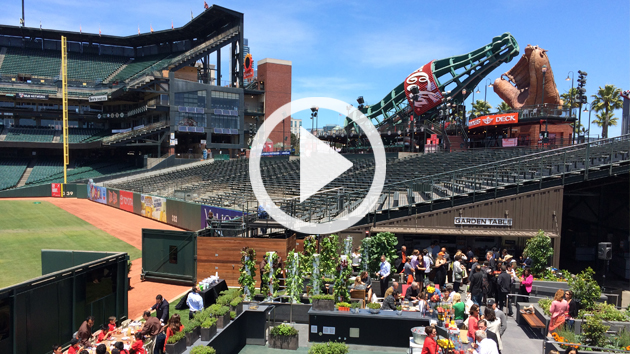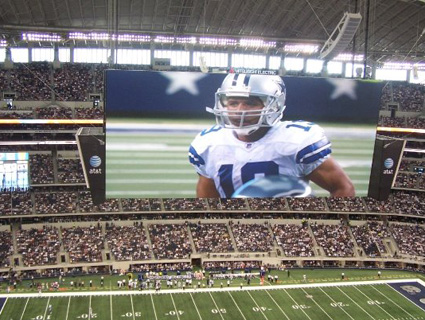
AT&T Park's new edible garden.Brett Brownell
Blueberries, avocados, and kale, fresh-picked for salads and small plates. Rows of water-saving aeroponic towers that grow as many as 44 veggie plants each. Fertilizer made from coffee grounds…at a baseball field?
That’s right: Below the scoreboard at San Francisco’s AT&T Park, a 4,320-square-foot edible garden space, the first of its kind in a sporting arena, will grow seasonal produce year-round while hosting outdoor classes on sustainability, urban farming, and healthy eating for Bay Area children. It also features a bar, dining tables, fire pits, and a sod farm (later harvested for use on the field) for picnicking fans. “We hope it really catches on with other parks,” says Eric Blasen, cofounder of Blasen Landscape Architecture, the studio that designed the garden.
Giants outfielder Hunter Pence confirms that it is—at least among Giants team members. At the garden’s grand opening on Tuesday, he said that at first his teammates made fun of his kale salads from the garden—until they tried them. Now they’re a team favorite.
So does a project like this have potential anywhere outside of San Francisco? For most Americans, a visit to the ballpark means hotdogs and pretzels, not flatbreads and kumquats. And the harvests will be small, only enough for “a fraction” of the stadium’s needs, says Bonnie Powell, director of communications for Bon Appétit Management, an AT&T park food provider that helped launch the garden. “The main point of the garden is to be an educational one: how food grows, and that you can grow it even in small, challenging spaces.”
The garden’s designers hope those themes will resonate with the fans. “We’ll have so much exposure,” says Silvina Blasen, the other cofounder at Blasen Landscape Architecture. “I mean, I think they can seat 44,000 people on these bleachers. It should catch on.”






